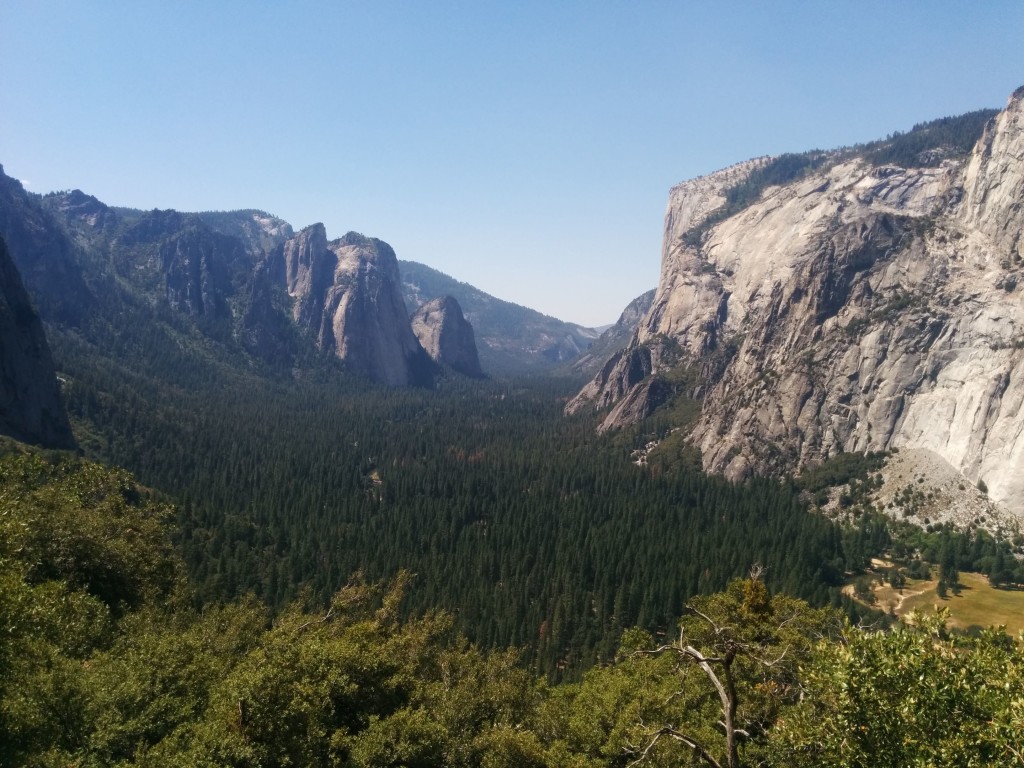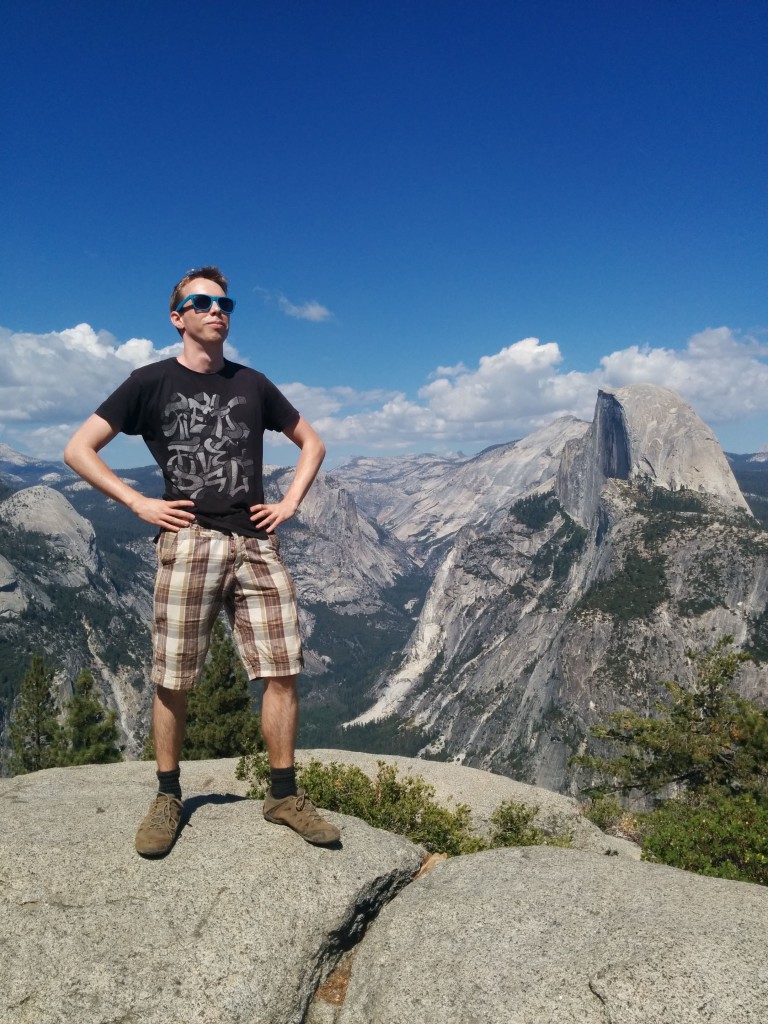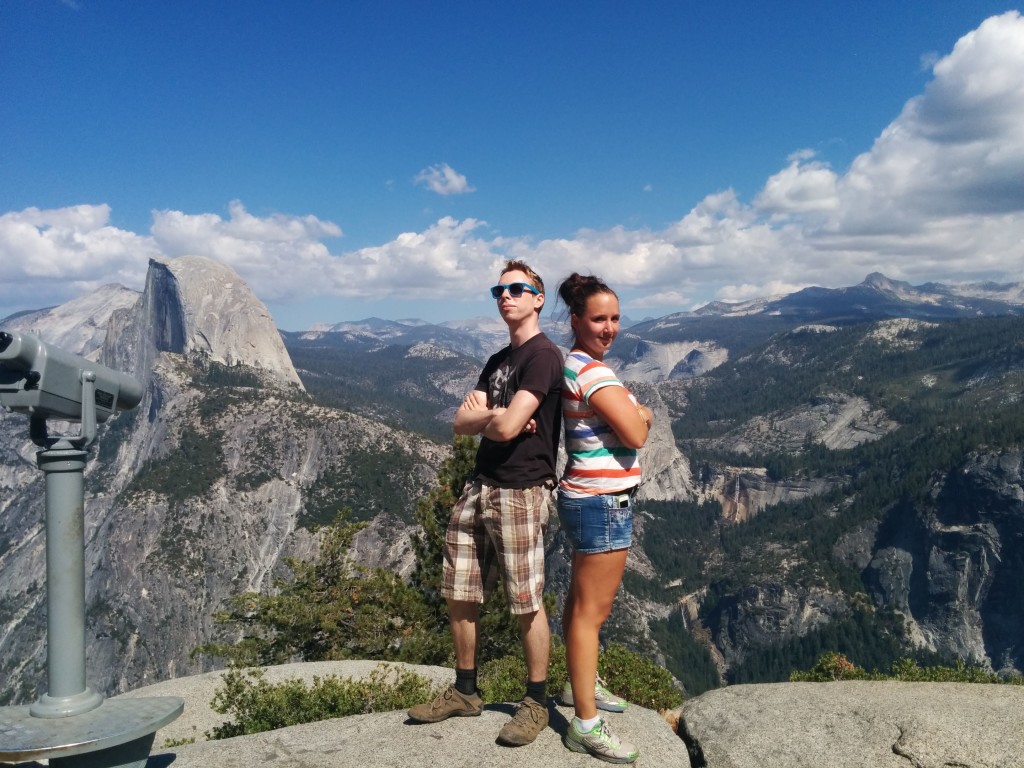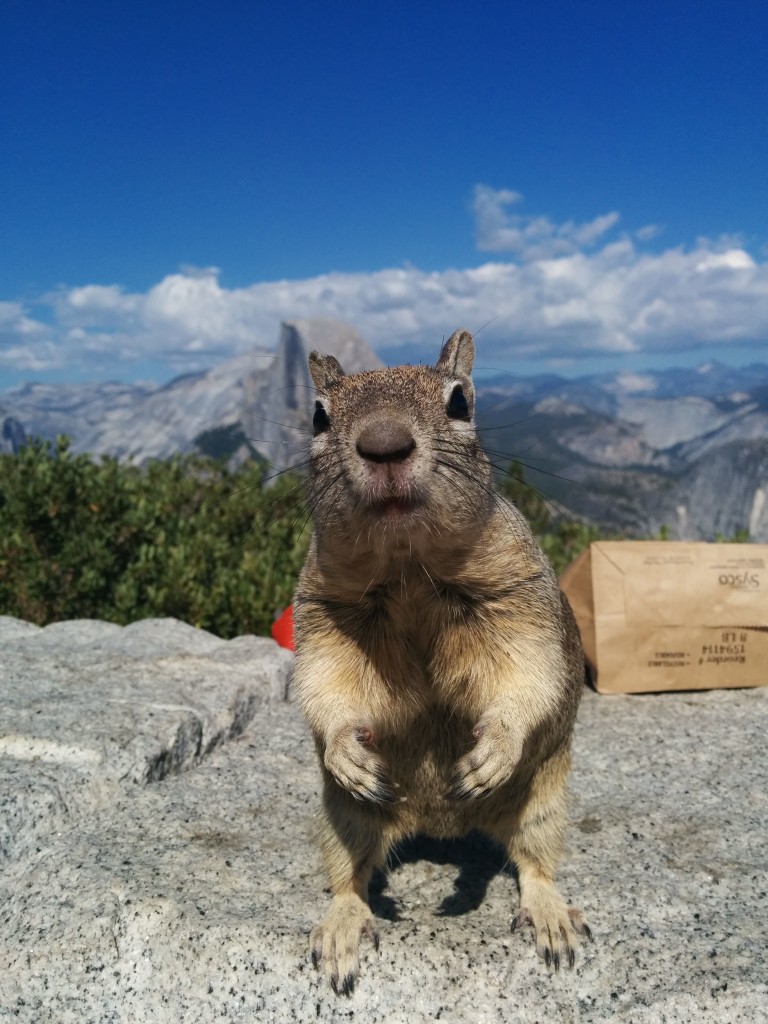Written August 2015.
I’ve just been lying on the warm tarmac near Yosemite park gazing up at the stars. They are clearer and deeper than I think I’ve seen for some years. The sky doesn’t even seem black. I have the sense that behind my immediate view there’s a cloud of countless more stars and galaxies waiting to be seen, if only my vision or a pair of ever more powerful binoculars allowed. The thick white trail of the milky way fully traversing the dome of the northern hemisphere testament to this.
It’s not for the first time that I regret my lack of knowledge of the constellations. In this absence I search for my own. The stick man wearing a cape. The five side of a dot – in fact, all six sides are visible numerous times). And the daddy long legs – regularly changing shape, and spotted in the corner when you’re looking for other far more useful constellations. I’m not entirely sure if these will help me navigate.
Over the past couple of days I’ve instead by journeyed by bus into the valley floor of the park. Head turned a full 90 degrees, eyes starring out of the window pane. Focus whirring as the landscape gradually trends towards ever greener vegetation, and granite cliffs that rise increasingly higher. Eventually El Captain, the largest granite monolith in the world, extending almost 1km into the sky. The first time this was scaled in one uninterrupted rock climb, it took almost a week.
I stick to the hikes. There are dozens of trails through the park. Snaking through the valley floor or up towards the peaks and waterfalls of higher ground. The most impressive of my views were from Glacier Point. In winter this point is only accessible via a 10km cross country sky. In summer, a footpath snakes up the 1,200m rock face. As ever, its the walk that really helps to make the view. The valley floor stretching away to the West, with the low August river golden in the afternoon sun; boulders bigger than my house, if not my 7 story office building; the nods of hello to the sweaty faces of those in the reverse direction; an Eagle hovering at eye level before soaring below; the shy profile of a young deer, gazing towards us from the safety of the trees; and the yielding of the views of El Captain towards the more Easterly peaks as the climb builds – most prominently, the Half Dome visible in the pictures below.
Really I’d need more days, camping equipment, un-battered knees (still bruised from a fall of a bike in San Francisco), and a car to explore this place properly. A cafe worker tells me about the old Indian caves about two hours hike beyond the tourists that circle around Mirror Lake. Someone else on the bus mentions Tioga Lake just beyond the park: 3000m above sea level and accessible only by a mountain pass through the Sierra Nevada that closes as the very first sign of winter1. And then there’s the walks you can do in the light of the full moon. Visibility complete; your world cast into a white glow.
In this night time there is no moon. The stars all the more impressive for it. A shooting star blazes across my vision. Part of the tail end of the Perseid meteor shower that has been decorating the California skies for the past few weeks. This rock burning up is incredibly bright, more so than I would have imagined to be normal. I’ve not seen one like this before. Better make this wish count…
1 To the west of the lake, this road descends slowly into the lush green valley of Yosemite park. To the right, it rapidly drops off into the harsh barren landscape of the Nevada desert. A mountain range is natures great divide. The gold prospectors that first drew out this trail with horseback and wagons in the mid 19th century were more than a little tenacious.




